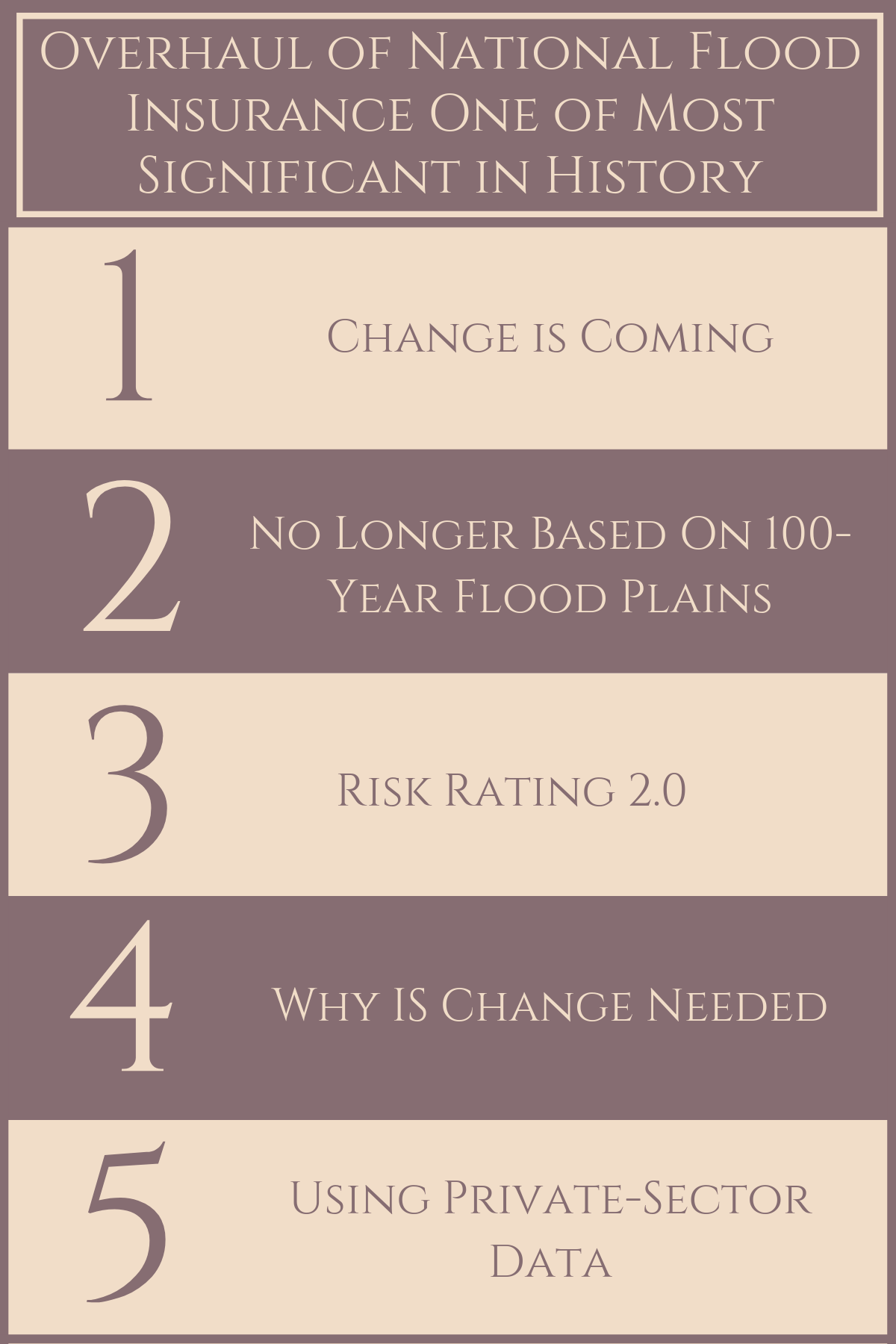27 Sep Overhaul of National Flood Insurance

855-368-5502
Overhaul of National Flood Insurance One of Most Significant in History
By: Adam M. Matheny
Change Is Coming
The Trump administration has unveiled one of the biggest overhauls of the National Flood Insurance Program (NFIP) in its history. Many climate advocates believe the changes will encourage communities to become better prepared for weather extremes. However, the changes may also drive costs up for a number of homeowners.
No Longer Based On 100-Year Flood Plains
One of the biggest problems with the old NFIP was that premiums were based on outdated 100-year flood plain information. Under the new changes, beginning in October 2020, each home will be assessed based on actual risk. Currently, NFIP rates are set based on whether an individual home sits inside the 100-year flood plain or outside of it.
The risk is that many people are likely to see a significant increase in the cost of their flood insurance. Climate resilience analyst for the Union of Concerned Scientists, Shana Udvardy states that while the new version of NFIP will let those communities who see repetitive flooding will be in a better position to see their actual risk, it could leave low-income and disadvantaged people unable to afford insurance.

Risk Rating 2.0
The final impetus for developing Risk Rating 2.0 (as it is referred to by FEMA) has been the number of catastrophic weather events such as Hurricanes Irma and Harvey in 2017, the Baton Rouge floods of 206, and Hurricane Florence in 2018. Many of the homes damaged during these events had no flood insurance as the current system being used by FEMA failed to accurately assess their risks.
According to David Maurstad, FEMA deputy associate administrator for insurance and mitigation, ” We have too much disaster suffering because we don’t have insured survivors.” The thought behind this was that by helping people to better understand their risks, it would increase their desire to invest in NFIP.
Why Is Change Needed?
Currently, approximately 5 million policyholders are covered by the NFIP, including 3.5 million single-family homes. However, despite the new risks associated with climate change, this number is down approximately 10 percent from when it hit its peak in 2009. The problem with the old system is that as climate change put more pressure on the program, it created a problem in which the number of claims continued to outpace the amount of money coming in from the premiums being collected. In 2017, the program was $30 billion in arrears.
Maurstad states that the new version is not designed to decrease or increase revenue but to provide a better product that would be fairer to everyone. Yet, according to FEMA press secretary Elizabeth Litzow, the new version of NFIP may increase revenue as it takes into account new types of flood risks such as flooding caused by intense rains, which had not been taken into consideration under the previous rating system.
Although the new types of flooding might only have a smaller impact on rates and risks than those currently in place, by introducing them into the program, it could have the effect of raising premium levels.
Using Private-Sector Data
The changes would take private-sector data to help calculate real flood risks for each home. Under the current system, if two homes sit in the same 100-year flood plain and one sits on the edge while the other sits in the middle, both pay the same premium. Under Risk Rating 2.0, the home on the edge of the flood plain could fall by as much as 57%, while the one in the middle could see their premiums double.
The big problem is that those home sitting in the highest risk areas would see the largest increase in rates, which could negatively impact housing prices in these areas. Yet anything that can be done to help people understand their risks better than with the old system, which while it might raise premiums, would be good for both investors and consumers in the long run.
Asaf Bernstein, University of Colorado at Boulder economist believes that increasing the cost of premiums will not only raise the cost of owning a home in these areas but would serve to warn potential buyers about the risk of flooding and might drive them away. While the government tried to increase premiums as far back as 2012 by linking them to the actual risk of homes, within two years opposition forced the government to abandon the policy.
The difference today is the significantly higher risk of flooding and the need for a program that will help protect people better now and in the future.

